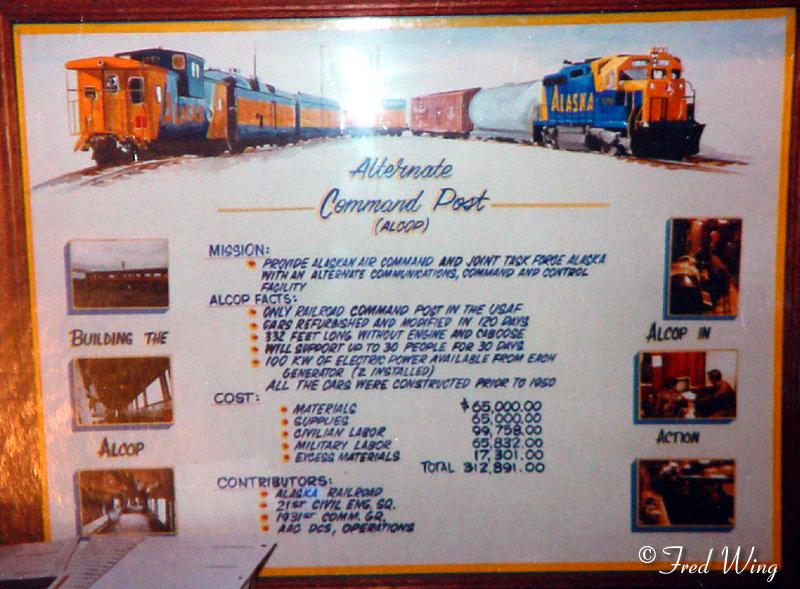

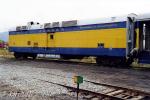 |
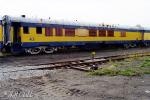 |
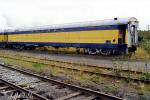 |
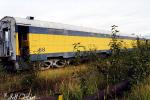 |
 |
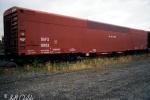 |
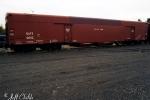 |
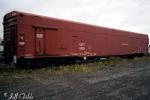 |
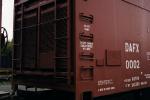 |
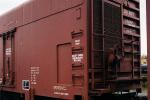 |
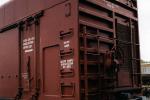 |
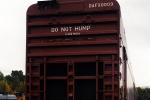 |
 |
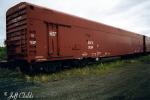 |
 |
 |
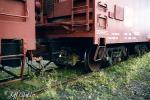 |
 |
 |
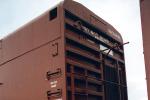 |
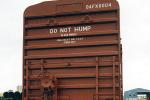 |
And here is some high resoultion scans of the missile cars for Steve Katkus and Mike Gerenday: 1, 2, 3, 4, 5, 6, 7, 8, 9, 10, 11, 12, 13, 14, 15, 16

In a September 29, 1998 e-mail I asked ARR railfan Jeff Childs, "What exactly was the USAF command train used for?" His response was highly informative. "Back in the days when SAC and USAF were sure that the Ruskies would use their Bear bombers to lob missiles at us, it was theorized that the local USAF and Army commands could be saved from destruction if they were in "mobile" mode. During Korea, some bright commander up here decided the best way to survive would be aboard a command train pulled by an Alaska Railroad engine. The command train featured passenger equipment still painted in ARR colors (so as not to bring too much attention to themselves no doubt) that had the most of the windows plated shut, the latest communications equipment installed, a power car, a couple of tank cars to feed the power car, as well as a kitchen and sleeping quarters for the men. The idea was to drive the train to one of the tunnels on the line and park it inside under all that rock. Eventually, the passenger equipment became obsolete and was replaced by the ex-MX missile cars that were converted to the same purpose, but received better shielding and Nuclear/Bacteriological/Chemical (NBC) protection. As reported in an earlier newsletter, the MX cars have all been cut up, as the train was no longer needed now that the Cold War has been won. The only remaining car from the "modern" trainset is a large boxcar that looks like it started life as an 86 foot auto parts boxcar. The older cars have survived and are scattered around the yard. The three I sent pix of were probably parked out on Ft. Richardson and just got shuffled into the yard area."
On December 3, 2003 Curt Fortenberry adds, "The web page you have on the USAF train has mixed subjects. Have you seen this page before?
http://www.berail.be/usa/alcop.html
"Now I was part of the 21st CES when we converted the cars. It was not a pretty sight. While we had good craftsman, they are used to building with 2x4's, and not lightweight efficient construction. I believe they spent more on the electronics gear than rebuilding the cars. The military history is generic, but there are other stories. I disagree with what Jeff said, as the command post cars were done in 1982, way past Korea. This is how I remember it.
"I believe it was General Clark (not the currently political guy), who at that time just came from Europe. Europe has a complex rail system and the mobile command posts work well there, I guess. So he wanted to recreate the same concept here in Alaska. When he approached the railroad, they were skeptical, as were many of the USAF folks I knew at the time. The railroad suggested that he paint the cars in the gray MOW scheme so they would just look like maintenance cars. No, he wanted it to look like the passenger cars. How many passenger cars do you see siting on a siding with antennas and a satellite dish? Plus, with a mainline under 400 miles, even an A10 could fly the line in an hour.
"The one operational experience I had with them was when I was stationed at Clear AFS as the site civil engineer. The railroad called me to have the old camp siding plowed out (it was winter). When I announced this at staff meeting, I was criticized for releasing a secret. I suggested they call the railroad and tell them it's a secret, as that's who called me.
"When General Clark visited the ALcop at Clear, one of the first things he announced was that the enemy knew where they were. As far as I was concerned, it was an operational failure, and when Clark left I don't know if it was ever used again.
"Correct, the DAFX cars were not part of the Alcop. Totally separate subjects. I don't think anyone we know has the total truth, but they showed up about the same time that Eielson got the GP40's. Speculation is that it was a package deal, and the cars went to surplus right away. They hid them pretty well, as I was told early on about some cars coming to Alaska, and my prowls around base failed to find them. This was in the early 1990's, and the Alcop was about 1982."
On December 4, 2003 the ARR Chief Mechanical Engineer adds, "It all went to scrap without ever being used. The intent was to replace the original command post train, mostly WWII hospital cars, which was used on several training exercises, as I recall. The armor plated boxcars had four standard 6 1/2 x 12 (100 ton) trucks, and the opportunity we missed in letting the span bolsters (the castings that supported the carbody centerplate and were in turn supported by two trucks) go [was unfortunate].
"The last car was sold at auction about a month ago. I thought of trying to get the RR to bid, and then of contacting the successful bidder to see if we could buy the bolsters. The 100 ton version is now considered obsolete in the Lower 48, heavy cars like these using 125 ton trucks these days. In Alaska, however, we still limit "100 ton" cars to 263,000# total weight on the rails (per two trucks). (It is an improvement over the 240,000 in effect when I came here in 1983.) The Class Is upped that limit to 286,000 several years ago, and many (most?) short lines and regionals followed. It appears that we are just now beginning to think about that change. Thus these parts would be an excellent start for a heavy capacity flat for the ARR and it would serve for many years to come. I would design the body for 730,000# (twice the 315,000# limit for a two truck 125 ton car) with the thought of substituting the heavier trucks (and bolsters) twenty or thirty years from now."
"AN ACE IN THE HOLE - a study of Alaska's Railmobile Command Post" by TSgt William J. Allen, Historian, Eleventh Air Control Wing, Elmendorf Consolidated History Office, Elmendorf AFB, Alaska, 13 January 1993

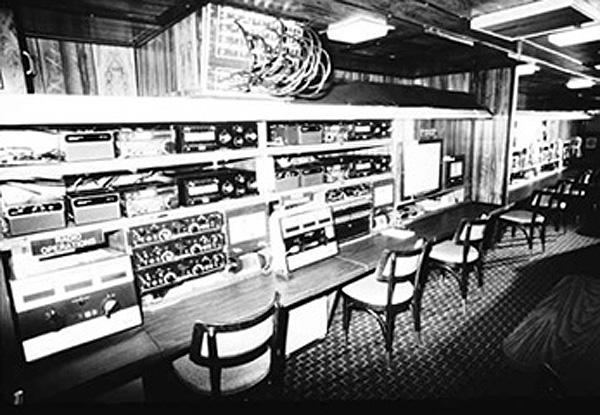
Interior of the Alternate Command Post (ALCOP) communications car
On October 18, 2013 Jack Waid, 354th Fighter Wing Historian provided the following photos:
 |
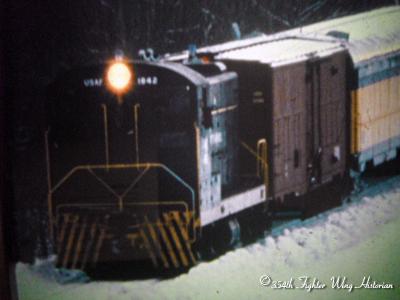 |
 |
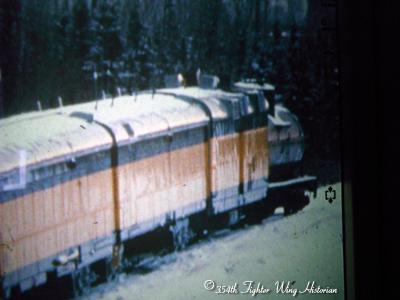 |
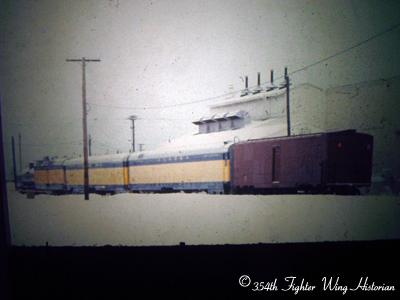 |
 |
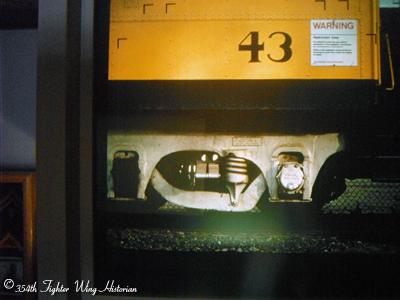 |
 |
 |
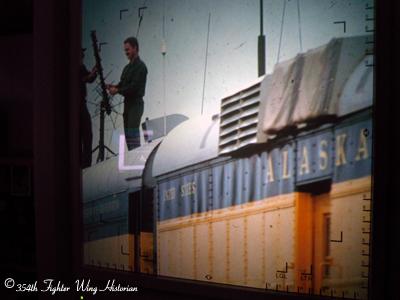 |
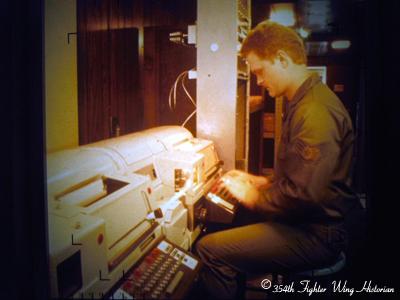 |
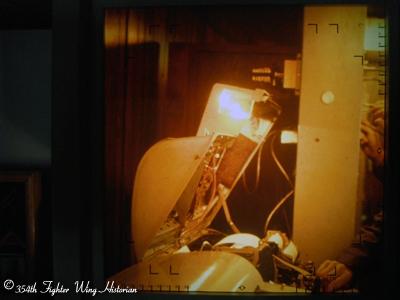 |
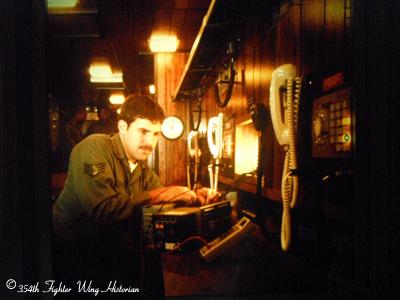 |
 |
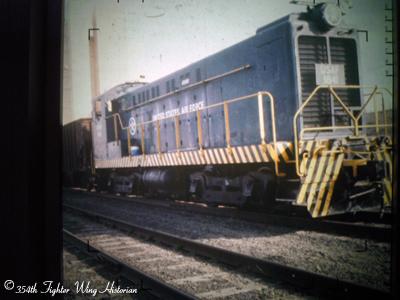 |
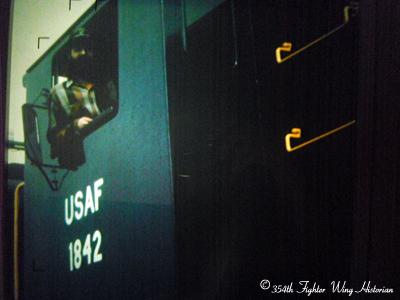 |
From an 11/13/15 email from Gunnar E. Svalland:
I came across your webpage while searching for information on the ALCOP. I was a Sergeant in the USAF and stationed at Elmendorf AFB from 1986 to 1988. One of my additional duties while stationed at Elmendorf was as a Telecommunications Operator (aka Teletype Operator) on the ALCOP. While reading through some of the history of the ALCOP on your page, I can confirm that the ALCOP was deployed in January of 1987 as part of Exercise Brim Frost 87. We left the rail yard in Elmendorf and parked up on a spur in Talkeetna for a few days. This was the only time we physically left the base rail yard during my 2 year tour. I climbed aboard the ALCOP two more times to fire up the teletypes to send and receive messages, but it never left the base rail yard.
Sorry I don't have any photographs of the excursion. It was a classified work area, so no cameras were allowed without written approval. I don't even think an "official" photographer showed up when the Generals flew up to visit us for a day. Besides, it was middle of January. If you stepped off the rail bed, you were waste deep in snow, and it snowed the entire time.
Public domain photos discovered by Steve Katkus 2/20/18
 |
 |
 |
 Security car |
 Security car |
 |
Question: Is the ALCOP and the Missile Train the same thing?
Answer: The ACE/Alcop original railcars were reaching their 50 year service life. The Peacekeeper carswere purchased to replace them. However, the USSR collapsed and it was decided they were no longer necessary.
See also:
Page created 12/2/03 and last updated
2/20/18
© 2004-2018 John Combs unless otherwise noted